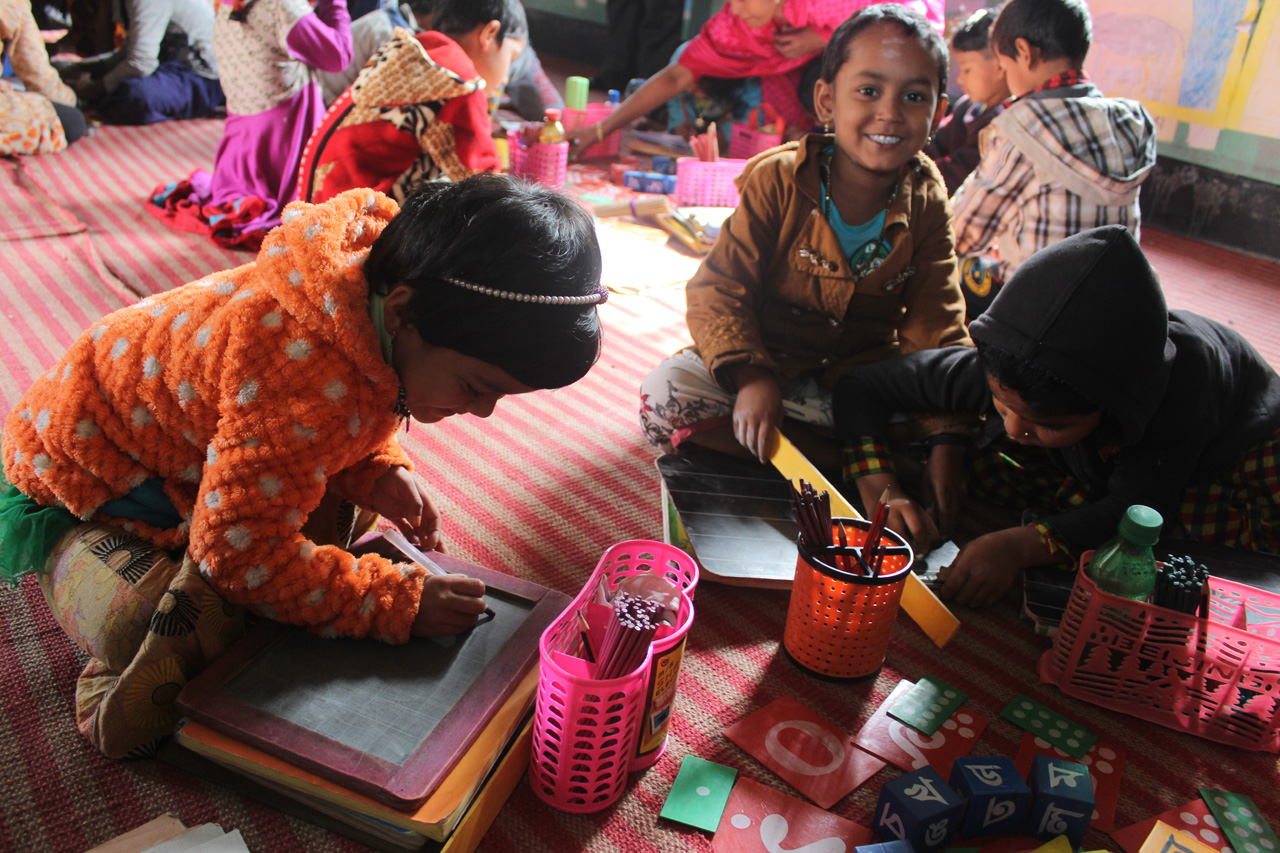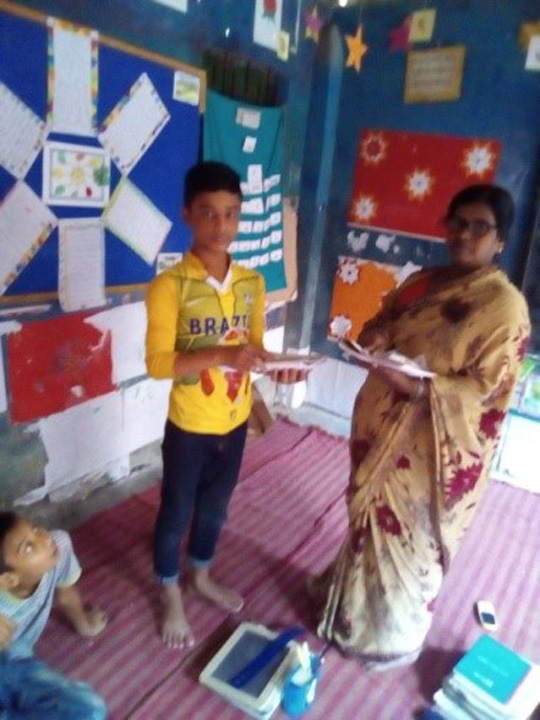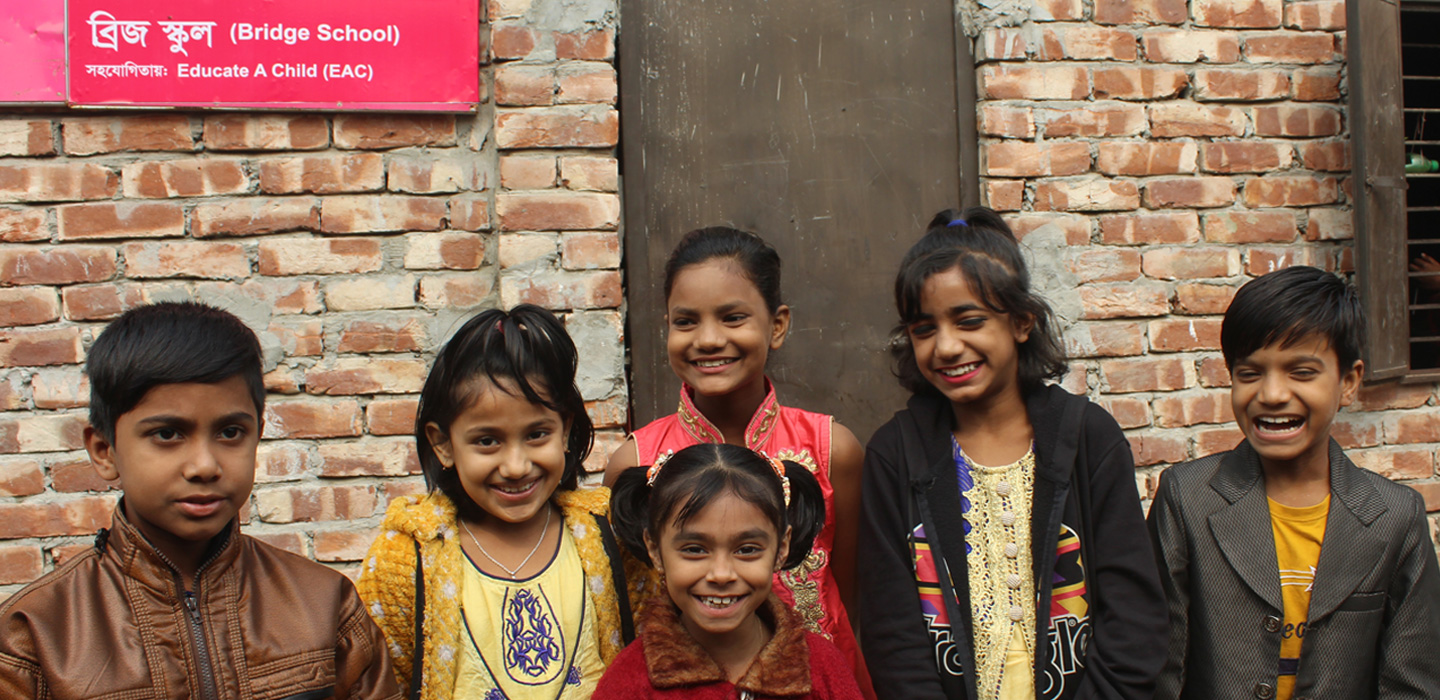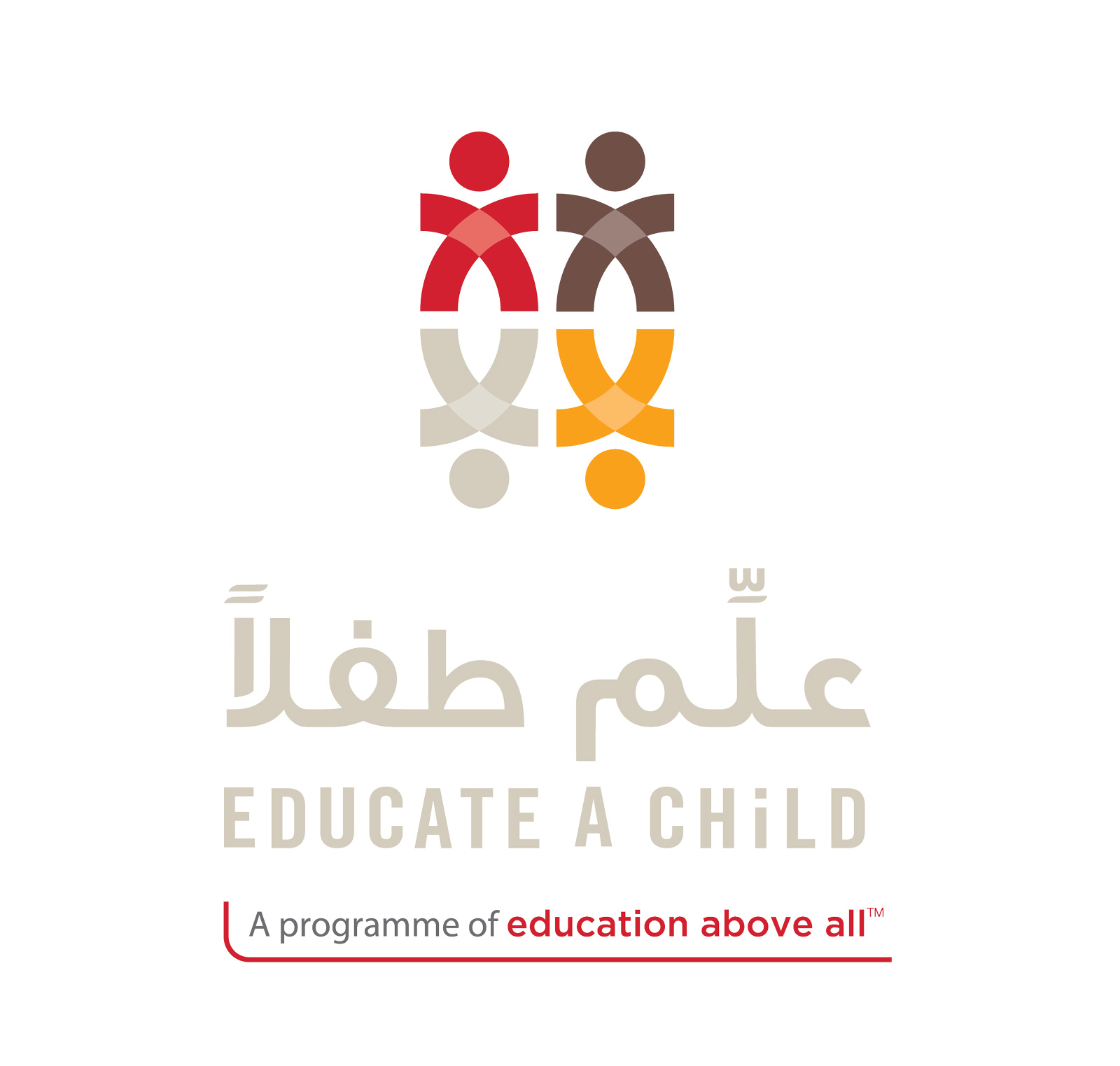BRAC Education Programme, in partnership with Educate A Child, offers non-formal primary education to children dropped out of schools to create a full system of educational opportunities through its Bridge School Programme for Out of School Children (OOSC). The project targets to reach 60,000 OOSCs through 2500 Bridge schools over the course of four years.
BRAC’s Bridge school is a new initiative for students who have dropped out of the formal school system in grade two, three and grade four. BRAC primary school targets students who have never been enrolled in any formal school and those who have dropped out of the formal system within the first three years. These students complete a five-year course in four years. Bridge school model focuses exclusively on the students who have dropped out of the formal schooling in grade two to four. In Bridge schools, these students go through a bridge course to refresh their previous learning and then get enrolled in grade two or three, based on their previous learning level. Thus, these students avoid repetition and save a schooling year which helps them to graduate in an expedited manner.
STRATEGY
Bridge school for grade two is a 40 months program which consists of three months of bridge course which refreshes their basic knowledge which they already learned when they were enrolled at the formal system. The next seven months the students will receive a crash course which covers grade two syllabuses since they have dropped out of grade two from the formal system. After completing grade two the students will spend nine months to complete the grade three syllabus, ten months for grade four and eleven months for grade five. Bridge school for grade three has similar components and time allocation and is expected to be completed within three years. Bridge school and BRAC primary school have the same curriculum and same academic calendar; the only variation that each lesson is denser and syllabus has adjusted acceding to the time period. The current BRAC primary school constrain the dropped out students to repeat certain grade which they have already completed in the formal schooling.
FEATURES

Children from poor and disadvantaged background particularly children from ethnic minority, children with special needs and street and domestic working children specially girls, who dropped out of formal schooling between ages eight and ten are given a second chance at education; each class has around 25 to 30 students. A locally recruited young female teacher with at least a secondary school certificate (SSC) is selected to guide the same cohort of students through primary education. Classes are held in one room school, within walking distance of the student’s residence. The students are selected based on the aptitude test which measures the students’ competence and analyzing the test scores students are placed into appropriate class. Intensity and contents of the Bridge course is also adjusted according to the average aptitude test score to bridge the competency gaps of grade II and III among the students.
Bridge course is a compulsory component of School for Dropout Children, it’s a combination of basic Mathematics, English and Science to stimulate students’ basic knowledge which they have previously acquired; it also helps students to fill the learning gaps and increase their competence. Bridge course encourages students to attend school on a regular basis and emphasizes on following school rules and regulations.
There is no tuition fee or admission fee for these students; all the necessary learning materials are provided by BRAC. The intense school schedule means that there are no long vacations and classes commence six days a week hence more content hour.
CURRICULUM
Based on the national curriculum and competency, BRAC developed textbooks for grade II and III to accommodate the intense class schedule; however for grade IV and V national textbook board issued textbooks are followed. Besides academic content, children are taught to emphasize on co-curricular activities and acquire basic life skills and social and moral values. For an inclusive classroom atmosphere, needs of ethnic minority and children with special needs are also catered into co-curricular and curricular activities. Interaction among the teacher and students is a crucial component in the teaching and learning methods used in classroom; Bengali is a standard medium of communication.
The learning environment is interactive and friendly among the teacher and peers. All the learning materials are gender sensitive, and promote equality. The curriculum is also need based, since different students have different needs. Group study and discussion are also encouraged in class; students are divided into small groups such that the brighter students are paired up with students with lower aptitude test scores. School for Dropout Children initiative reduces the grade repetition that students previously faced when they dropped out of the formal schooling in grade two and three.
Along with curricular activities, co-curricular activities such as physical exercise, singing, dancing and role playing are also emphasized since it helps develop students both physically and mentally; it also ensures higher attendance rate in school.
A total of 2500 schools are being operational with a total of 72,196 students during the last of 2019.

STORIES

Shohag Mia is one of the 72,196 students of BRAC’s Bridge School project. Shohag Mia lived in a remote village of Narshingdi district, 50 km north-east of Dhaka, capital city of Bangladesh. Shohag comes from a family belonging to low socio – economic class, where there were many children, his parents did not have enough money for the basic family needs.
“I attended primary school in his village. As time went by this situation degraded when my father died and my mother became the only breadwinner of their family. We shifted to Dhaka and my mother started working as a domestic worker to provide the family. Livelihood is moderately expensive than the countryside, so my brothers started working as day laborers. Sometimes, I need to lend a hand for earning money, but I wanted to go to school. Then again there was no place for school or education in my life”, said Shohag Mia.
“Then one day I came to know about BRAC Bridge School, where teachers wanted to give a ‘second chance’ in education and best part is that I can study without any tuition fee. Moreover, the school also provide free education materials,” said delightful Shohag.
Now Shohag is a students of grade IV in Korail Jamai Bazar BRAC Primary School at South Badda in Dhaka.
He said, “I complete all my study at school. In my leisure time I help my mother. My mother is also happy that I got chance to go to school without fee.I love to go to school because my teacher and friends are so approachable and kind.”






